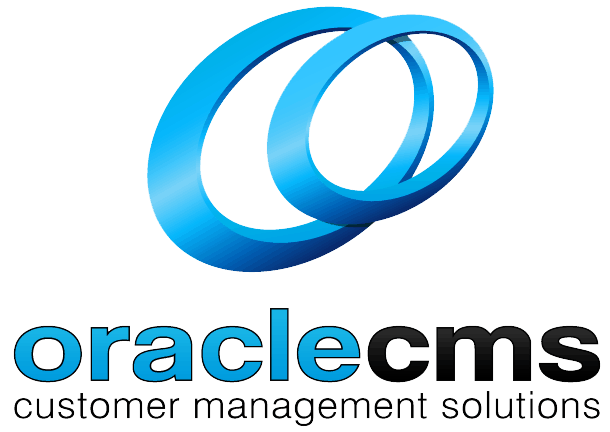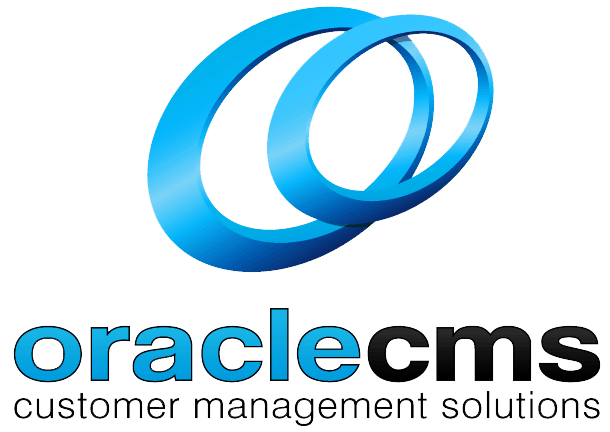
The Future of Healthcare Customer Service Trends and Technologies Shaping Patient Care
In recent years, the healthcare industry has seen a transformative shift in how patient care is delivered and managed, largely driven by advances in technology and changing patient expectations. Today, customer service in healthcare, including healthcare answering service and medical answering service, encompasses much more than just handling inquiries and managing appointments; it’s about creating a seamless, supportive, and personalized patient experience that contributes to better health outcomes.
The significance of customer service in healthcare cannot be overstated. It directly impacts patient satisfaction, retention rates, and the overall efficiency of healthcare delivery. As we look towards the future, it’s clear that the evolution of customer service in this sector will continue to be shaped by technological innovations and the increasing emphasis on patient-centred care.
In this article, we will explore the key trends and technologies that are currently reshaping healthcare customer service. From the integration of telehealth services to the utilization of artificial intelligence for personalized patient interactions, these developments promise to enhance the way healthcare providers engage with and care for their patients, further supported by specialized services like healthcare answering service and medical answering service.
Trends Reshaping Healthcare Customer Service
The healthcare sector is experiencing significant shifts in customer service delivery, driven by technological advances and evolving patient expectations. Here are some of the major trends that are transforming the landscape of healthcare customer service:
Rise of Telehealth and Remote Care Services
Telehealth has surged in popularity, particularly intensified by the COVID-19 pandemic, as patients and providers seek convenient, safe, and effective alternatives to in-person medical consultations. This trend has not only expanded access to healthcare but also increased the need for customer service that can operate effectively in a virtual environment. Telehealth services require robust support systems to assist with scheduling, technical issues, and follow-up care, ensuring that patients feel supported throughout their virtual care journey.
Personalization of Patient Interactions
With the availability of more sophisticated data analytics, healthcare providers are now able to offer more personalized care than ever before. This extends to customer service, where interactions are increasingly tailored to the individual needs of patients. Personalization can involve customizing communication preferences, addressing patients by name, and recalling previous interactions to make the service experience more comforting and effective. Such personalized approaches are proving essential for enhancing patient satisfaction and adherence to treatment plans.
Increased Use of Patient Data Analytics
Healthcare organizations are leveraging data analytics to improve customer service by anticipating patient needs and optimizing service delivery. This involves analyzing trends from patient feedback, service usage patterns, and health outcomes to better align services with patient expectations. By effectively using data, healthcare providers can identify areas for improvement in their customer service, streamline operations, and ultimately, enhance the patient care experience.
These trends are not only enhancing direct interactions with patients but are also setting new standards for how healthcare services are structured and delivered. By understanding and adapting to these trends, healthcare providers can significantly improve the quality of care and ensure a better patient experience.
Technologies Driving Change in Healthcare Customer Service
As the healthcare industry evolves, several key technologies have emerged as catalysts for enhancing customer service and patient care. These innovations are not only improving the efficiency of healthcare delivery but are also making it more personalized and accessible. Here are some of the pivotal technologies reshaping healthcare customer service:
Artificial Intelligence (AI) and Machine Learning (ML) Applications
AI and ML are revolutionizing healthcare customer service by automating routine tasks, such as appointment scheduling and patient data management, thereby freeing up human agents to focus on more complex patient interactions. Moreover, AI-powered chatbots and virtual assistants are increasingly being deployed to provide first-line support, offering immediate responses to patient inquiries and triaging cases to the appropriate medical professionals when necessary. These tools are designed to learn from interactions, improving their ability to handle inquiries over time and providing insights into patient needs and behaviours.
Implementation of Advanced CRM Systems
Customer Relationship Management (CRM) systems in healthcare are becoming more sophisticated, integrating various forms of communication (calls, emails, chat, etc.) to create a seamless experience for patients. These systems help manage and analyze patient interactions, ensuring that service is consistent and informed by the patient’s history and preferences. Advanced CRM systems can also alert healthcare providers to important patient milestones, like follow-up appointments or medication refills, enhancing adherence to treatment plans and preventive care guidelines.
Role of Mobile Technology in Patient Engagement
Mobile technology has become a cornerstone of modern healthcare customer service. Mobile apps offer patients direct access to their health information, appointment scheduling, and communication with healthcare providers. These apps can send push notifications for medication reminders or upcoming doctor’s appointments, making it easier for patients to manage their health proactively. Additionally, wearable devices that monitor health metrics in real-time can automatically update patient records and alert healthcare providers to potential health issues before they become acute.
The integration of these technologies into healthcare customer service not only enhances the efficiency and effectiveness of care but also significantly improves the patient experience by offering convenience, personalization, and proactive health management.
Impact of Customer Service on Patient Experience
Effective customer service in healthcare goes beyond mere interaction—it plays a crucial role in shaping the overall patient experience and influencing health outcomes. Here we explore how improved customer service enhances patient access to health services and strengthens communication between patients and providers.
Improving Patient Access to Health Services
Accessible customer service is fundamental in ensuring that patients can obtain the medical care they need without unnecessary delays or confusion. By simplifying appointment scheduling, offering multiple communication channels (phone, online portals, mobile apps), and providing clear information on available services, healthcare providers can significantly reduce barriers to access. This proactive approach to customer service helps in managing patient flow more efficiently, reducing wait times, and ensuring that patients receive timely care. Additionally, services like remote consultations and 24/7 customer support can cater to a broader range of patient needs, accommodating those with mobility issues or those living in remote areas.
Enhancing Communication Between Patients and Providers
Strong communication is the backbone of effective healthcare. Enhanced customer service facilitates open and clear communication, allowing patients to voice their concerns, ask questions, and receive straightforward explanations about their health and treatments. This not only aids in building trust but also empowers patients to make informed decisions regarding their health care. Moreover, consistent follow-ups and personalized communication strategies can improve adherence to treatment plans and encourage a more proactive approach to health management.
Improving these aspects of customer service can lead to a more patient-centred healthcare system where services are tailored to meet the specific needs of individuals, ultimately leading to better patient satisfaction and improved health outcomes.
Challenges in Implementing New Customer Service Technologies
While the integration of new technologies can significantly enhance the quality of healthcare customer service, several challenges can impede their successful implementation. Addressing these challenges is crucial for healthcare providers to fully realize the benefits of these advancements.
Integration with Existing Healthcare Systems
One of the major hurdles is the seamless integration of new technologies with existing healthcare systems. Many healthcare providers operate on legacy systems that may not be compatible with the latest software solutions, leading to potential disruptions in service. Ensuring that new technologies can communicate effectively with older systems requires careful planning, substantial investment, and often a phased approach to implementation. This can include upgrading parts of the existing infrastructure, using middleware to facilitate communication between different applications, or sometimes a complete system overhaul.
Ensuring Data Privacy and Security
The healthcare industry is highly sensitive to issues of data privacy and security. With the increasing use of digital platforms for customer service, there is a heightened risk of data breaches and cyber attacks, which can compromise patient information. To mitigate these risks, healthcare providers must implement robust security measures, comply with stringent regulatory standards such as HIPAA (in the United States) and GDPR (in Europe), and continuously update their security protocols to counter emerging threats. This involves not only technological solutions but also training staff to recognize and respond to security risks.
Addressing the Digital Divide Among Patients
Another significant challenge is the digital divide that exists among different patient demographics. Some patients, particularly older adults, those in rural areas, or those from lower socio-economic backgrounds, may not have access to the necessary technology or may lack the digital literacy required to utilize advanced customer service platforms. Healthcare providers need to develop strategies to ensure that these patients are not left behind. This might involve maintaining traditional communication methods alongside newer ones, providing training for patients to use digital tools, and ensuring that technology solutions are accessible and user-friendly.
Overcoming these challenges requires a comprehensive strategy that encompasses technical, operational, and educational elements. By addressing these issues, healthcare providers can effectively implement new technologies to enhance customer service, thereby improving patient care and operational efficiency.
Future Directions in Healthcare Customer Service
As we look toward the future, several promising developments are poised to further transform healthcare customer service. These innovations not only aim to enhance the patient experience but also to streamline operations and foster greater collaboration between technology providers and healthcare professionals.
Predictive Customer Service Models
Predictive customer service models are emerging as a game-changer in healthcare. These systems use data analytics and machine learning to predict patient needs before they arise, enabling proactive service delivery. For example, if a predictive model identifies a patient at risk of a chronic condition, it can automatically schedule follow-up appointments or send educational content related to their condition. This approach not only improves patient care but also optimizes resource allocation within healthcare facilities.
Expansion of Self-Service Options Through Patient Portals
Patient portals are set to become more robust, offering a wider range of self-service options. These platforms allow patients to manage their healthcare proactively, from scheduling appointments and viewing test results to renewing prescriptions and chatting with healthcare providers. Expanding these portals to include more comprehensive services will empower patients, enhance their engagement with their health care, and reduce the administrative burden on healthcare staff.
Collaborative Efforts Between Tech Companies and Healthcare Providers
Collaboration between technology companies and healthcare providers is critical to driving innovation in customer service. These partnerships can leverage the tech company’s expertise in software development and the healthcare provider’s understanding of patient care needs to create tailored solutions that enhance customer service. For instance, developing integrated platforms that provide a seamless user experience can improve patient satisfaction and operational efficiency.
The future of healthcare customer service lies in harnessing these technological advancements to provide more personalized, efficient, and proactive services. As these trends continue to evolve, they hold the potential to significantly transform the patient experience and the overall effectiveness of healthcare delivery.
Conclusion
As we have explored throughout this article, the landscape of healthcare customer service is undergoing a remarkable transformation, driven by rapid advancements in technology and a deeper understanding of patient needs. The integration of these new technologies and practices is setting a new standard for how healthcare providers interact with and care for their patients.
Summary of Key Points
- Telehealth and Remote Care Services are expanding access to medical care, allowing for efficient management of patient health remotely.
- Personalization and the use of predictive models are enhancing the patient experience by anticipating needs and customizing interactions.
- Data analytics and machine learning play crucial roles in optimizing healthcare delivery and improving service outcomes.
- Patient portals and other self-service options are empowering patients to take an active role in their healthcare management.
- Collaborations between tech companies and healthcare providers are crucial for driving forward innovation and tailoring solutions to specific healthcare needs.
The Role of Continuous Innovation in Healthcare Customer Service
Continuous innovation is not just beneficial; it is essential for the future of healthcare customer service. As patient expectations evolve and technological capabilities advance, healthcare providers must remain committed to exploring new ways to improve service delivery and patient care. This ongoing innovation will be crucial in maintaining high standards of care, improving health outcomes, and ensuring patient satisfaction.
Final Thoughts on the Future of Patient Care and Service Excellence
Looking forward, the future of healthcare customer service is bright with potential. By embracing these technological advancements and focusing on patient-centred service models, healthcare providers can significantly enhance the quality of care. This proactive approach to customer service not only meets the current needs of patients but also anticipates future demands, ensuring that the healthcare industry continues to advance in its most critical mission—caring for people.
The journey towards service excellence in healthcare is an ongoing one, characterized by continual learning and adaptation. As we look to the future, it is clear that the integration of innovative customer service solutions will play a pivotal role in shaping the next generation of healthcare.
FAQ’s
Q1: What is healthcare customer service?
A1: Healthcare customer service refers to the various ways healthcare providers interact with patients, from handling inquiries to managing treatment processes, focusing on enhancing patient experiences and outcomes.
Q2: How is technology transforming healthcare customer service?
A2: Technology is revolutionizing healthcare customer service by enabling more personalized care through AI, improving access via telehealth, and optimizing service delivery through advanced data analytics and CRM systems.
Q3: What are the benefits of telehealth services?
A3: Telehealth services offer patients convenient access to healthcare, reduce the need for physical travel, and allow for continual care management remotely, which is especially valuable in managing chronic conditions and during health crises like the COVID-19 pandemic.
Q4: How does personalization in healthcare customer service impact patient care?
A4: Personalization improves patient care by tailoring interactions and treatments to individual patient needs, enhancing satisfaction, adherence to treatment, and overall health outcomes through a more engaging and supportive care experience.
Q5: What role does AI play in healthcare customer service?
A5: AI assists in automating routine tasks, provides first-line support via chatbots, helps in patient triage, and enhances the personalization of patient interactions by analyzing data to predict needs and optimize care pathways.
Q6: What are the challenges of implementing new customer service technologies in healthcare?
A6: Challenges include integrating new technologies with existing systems, ensuring data privacy and security, and addressing the digital divide to ensure all patients can benefit from advanced healthcare solutions.
Q7: How can healthcare providers overcome barriers to technology adoption?
A7: Providers can overcome barriers by upgrading infrastructure, ensuring compliance with privacy regulations, offering patient education on technology usage, and maintaining traditional service methods alongside new technologies to accommodate all patient groups.
Q8: What future trends are expected in healthcare customer service?
A8: Future trends include the expansion of AI capabilities, wider adoption of telehealth, increased use of patient data for predictive care, and greater integration of mobile technologies into daily healthcare management.[/vc_column_text][/vc_column][/vc_row]



